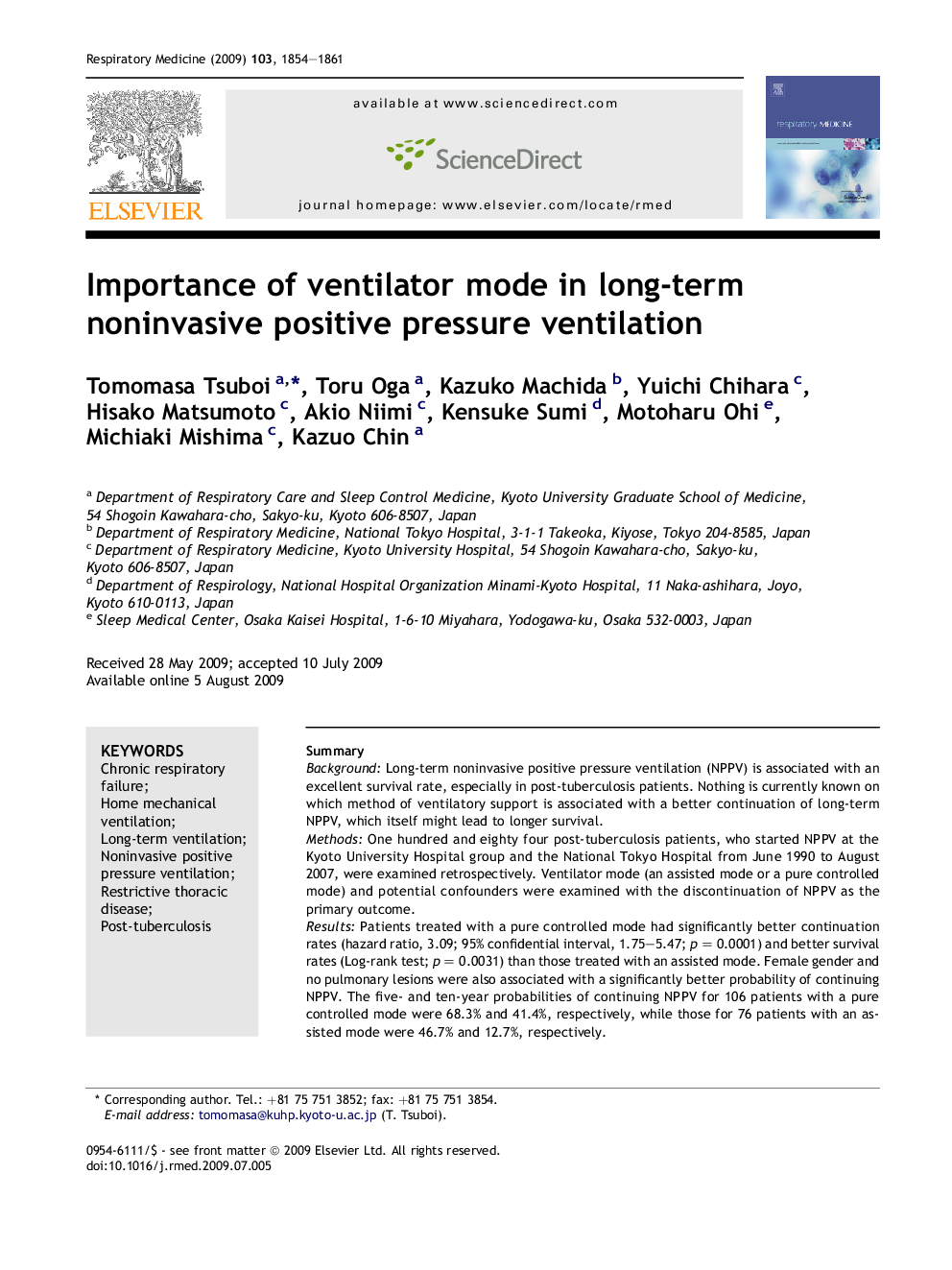| Article ID | Journal | Published Year | Pages | File Type |
|---|---|---|---|---|
| 4210815 | Respiratory Medicine | 2009 | 8 Pages |
SummaryBackgroundLong-term noninvasive positive pressure ventilation (NPPV) is associated with an excellent survival rate, especially in post-tuberculosis patients. Nothing is currently known on which method of ventilatory support is associated with a better continuation of long-term NPPV, which itself might lead to longer survival.MethodsOne hundred and eighty four post-tuberculosis patients, who started NPPV at the Kyoto University Hospital group and the National Tokyo Hospital from June 1990 to August 2007, were examined retrospectively. Ventilator mode (an assisted mode or a pure controlled mode) and potential confounders were examined with the discontinuation of NPPV as the primary outcome.ResultsPatients treated with a pure controlled mode had significantly better continuation rates (hazard ratio, 3.09; 95% confidential interval, 1.75–5.47; p = 0.0001) and better survival rates (Log-rank test; p = 0.0031) than those treated with an assisted mode. Female gender and no pulmonary lesions were also associated with a significantly better probability of continuing NPPV. The five- and ten-year probabilities of continuing NPPV for 106 patients with a pure controlled mode were 68.3% and 41.4%, respectively, while those for 76 patients with an assisted mode were 46.7% and 12.7%, respectively.ConclusionsPatients treated with pure controlled ventilation had significantly better continuation rates and survival rates than those treated with assisted ventilation. Prospective randomized controlled trials are needed to verify the effectiveness of a pure controlled mode in patients with not only restrictive thoracic disease but also other diseases including chronic obstructive pulmonary disease.
